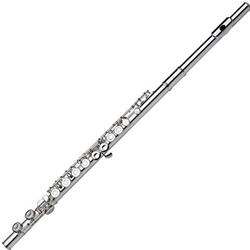The Horn Doctor wants to help match your child with an instrument that he/she will enjoy and will be successful playing. In order to do this, we consider many factors. We also encourage you to consider these factors so you can be an informed participant in this important process. Below is a partial list of considerations.
- Please consider your child’s interest in certain instruments after seeing, hearing, and reading about all the available instrument choices. We encourage each child to come to the interview with the idea of trying three or four instruments rather than having his/her heart set on just one.
- Your child’s unique physical characteristics should be considered. Teeth, lips, jaw, facial muscles, fingers, hands, and coordination are often good indicators in helping us match children with particular instruments.
- Your child’s personality is a consideration. Certain personalities often match well with certain instruments. Others do not.
- We want to avoid making decisions based on factors that do not have the child’s best interest in mind. For example, a family member’s experience with a certain instrument often has no bearing on a child’s unique abilities or interests. Likewise, Uncle Joe’s antique musical instrument (recently found in the attic) may be convenient but not the best choice for the physical characteristics of your child
- Many older family instruments end up requiring expensive reconditioning and still prove far more challenging for young players to play than one of the recommended models. We recommend models and brands of instruments, mouthpieces, and equipment that beginners are likely to have the most success.
Brass Instruments: Trumpet | French Horn| Trombone| Baritone/Euphonium| Tuba
Percussion: Percussion
WOODWIND INSTRUMENTS IN THE BAND
The FLUTE is the soprano (high voice) instrument of the woodwind family. Because
flutes were once made of wood, they are still classified as woodwinds. Most modern
flutes are made of silver, nickel, or a combination of both.
WHAT IT TAKES TO PLAY THE FLUTE:
- MOUTH: Must be able to form and hold a very small, round aperture (hole) with
the lips. Tongue must not be attached too close to the tip. “Teardrop” top lips
make flute more challenging. - HANDS AND FINGERS: Must be able to control and coordinate fingers very
well. The oboe uses eight fingers and one thumb. Students with double-jointed
fingers may have a harder time playing flute. - PERSONALITY: Good students with self-assured personalities tend to do well on
flute. Students who are not comfortable with competition may need to choose
another instrument. This class usually contains a large number of “overachievers.”
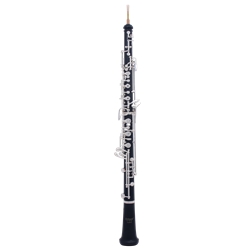
The OBOE is a double reed instrument. The oboe has a high voice that soars over and through the other instruments.
It usually plays melody lines and is often featured as a solo instrument.
WHAT IT TAKES TO PLAY THE OBOE:
- MOUTH: Lips must be able to cover the teeth and grip the reed.
- HANDS AND FINGERS: Must be able to control and coordinate fingers very
well. The flute uses nine fingers including one thumb. Students with double-joint
fingers are short pinkies are discouraged from choosing the oboe. - PERSONALITY: Students who do well on oboe tend to be reliable and creative
individuals. Oboe students are generally independent people who enjoy working
with puzzles and working with their hands. Many oboe players are straight
“A” students.
Special note for students and parents considering oboe.
Due to the unique skills required to play the oboe and to adjust the hand-made
reeds, oboe students are strongly encouraged to study with a private instructor.
If your child is considering oboe, please remember to consider this aspect of the instrument.
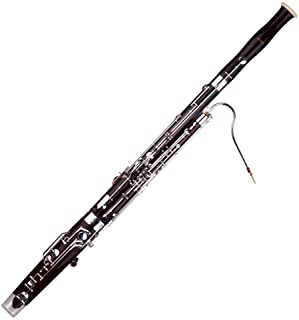
The BASSOON is also a double reed instrument, but a deeper voice. Bassoons
sometimes help with the harmonic foundation of the music but are often featured with
melody parts and solos. Although they appear fairly large, for ease of transportation,
bassoons come apart and fit in briefcase-size cases. The bassoon is a school-owned
instrument.
WHAT IT TAKES TO PLAY THE BASSOON:
- MOUTH: Lips must be able to cover the teeth and grip the reed.
- HANDS AND FINGERS: Hand size is extremely important. Bassoon players
need large hands for support and control. Thumbs must be agile (they control 14
keys). Students must have long, agile fingers that can be precisely controlled. - PERSONALITY: Students who do well on bassoon tend to be reliable and
creative individuals. Bassoon students are generally independent people who
enjoy working with puzzles and working with their hands. Many bassoon players
are straight “A” students.
Special note for students and parents considering bassoon.
Due to the unique skills required to play the bassoon and to adjust the hand-made
reeds, bassoon students are strongly encouraged to study with a private teacher. Please
consider this if your child has a desire to play the bassoon.
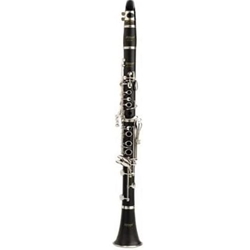
CLARINETS and BASS CLARINETS have a single-reed mouthpiece and keys that
open and close holes in the body of the instruments to make different sounds. Because
clarinets can play a very wide range of notes, they serve many roles in the band. They
can play melody, counter melody, or harmonic parts.
WHAT IT TAKES TO PLAY CLARINET AND BASS CLARINET:
- MOUTH: Must be able to make and hold a flat chin (as when you say the word “vee”).
- HAND AND FINGERS: Clarinet players need fingers that can span the distance
between the keys of the instrument. - PERSONALITY: Students who choose clarinet feel comfortable working
independently and with others. Clarinet players are creative individuals but also
like to approach things with a serious, “get down to business” attitude.
The bass clarinet is a school-owned instrument.

The SAXOPHONE is completely made of brass and is the newest member of the
woodwind family. The members of the Saxophone family include the Alto Sax,
Tenor Sax, Bari Sax, and Soprano Sax.
WHAT IT TAKES TO PLAY THE SAXOPHONE:
- MOUTH: Must be able to form and hold a flat chin. Also, students must be able
to control lip pressure on all sides of the mouthpiece. - HANDS AND FINGERS: Must have fairly strong pinkie fingers. Hands must be
large enough to reach around the instrument and work the keys without
touching any side keys. - PERSONALITY: This instrument is a popular first choice among students. This
means there is a lot of competition among students. Students who do not enjoy
the rigors of competition should choose another instrument. All saxophone
beginners learn to play alto saxophone. After their beginner year, some students
are asked to “double” on tenor and baritone saxophone.
Brass Instruments of the Band

The TRUMPET and the CORNET are shaped slightly differently (the trumpet is more
slender and appears longer than the cornet), but are played exactly the same way. We
encourage beginning band students to start on cornets because cornets are a little easier to
hold and blow. Many students move to the trumpet after their beginner year. Cornets and
trumpets are the soprano (high range) voice of the brass family and are used extensively
in band, orchestra, jazz band, and marching band.
WHAT IT TAKES TO PLAY THE CORNET OR TRUMPET:
- MOUTH: Must be able to form and hold in the correct position (embouchure)
while blowing. Must be able to make a relaxed buzzing sound in the
cornet mouthpiece. - HANDS AND FINGERS: Cornet and trumpet use three fingers of the right hand
to play the instrument. The left hand supports the weight of the instrument and
works small tuning slides. - PERSONALITY: Successful trumpet players are generally self-assured. Children
with a confident, showy, temperament tend to do well on trumpet.

The FRENCH HORN is a beautiful, mellow-sounding instrument. Due to its wide
range and tonal variety, the French horn is one of the most important instruments in the
concert band. French horns are often featured on soaring melodies, counter-melodies and
harmonic accompaniments. The French horn is a school-owned instrument.
WHAT IT TAKES TO PLAY THE FRENCH HORN:
- MOUTH: Must be able to form and hold in the correct position (embouchure)
while blowing. Must be able to make a relaxed buzzing sound in the
mouthpiece. - HANDS AND FINGERS: The horn is played with the left hand. The right hand
is used for minor tuning and for muffling the sound. - PERSONALITY: French horn players are determined individuals and bright
students. Successful horn players have a very fine ear for small changes in the
highness or lowness of a musical pitch. The ability to match a pitch by singing or
humming is a must.
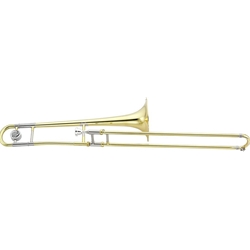
The TROMBONE is the only brass instrument that uses a slide instead of valves to
control the pitch of the horn. The trombone has a tenor (medium range) voice.
Trombones are popular in marching, concert, and jazz bands.
WHAT IT TAKES TO PLAY THE TROMBONE:
- MOUTH: Must be able to form and hold in the correct position (embouchure)
while blowing. Must be able to make a relaxed buzzing sound in the
mouthpiece. Trombone is more forgiving for students with braces. - HANDS AND FINGERS: Arms should be long enough to reach the longest slide
positions. Must have good hand-eye coordination. - PERSONALITY: Trombone players tend to be outgoing individuals.
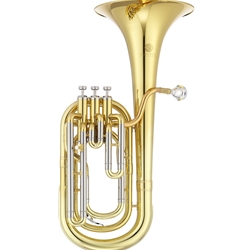
The BARITONE or EUPHONIUM has a tenor (medium range) voice. The baritone is played like the trumpet, but has a deeper tone. Baritones are often featured with melody lines and counter melodies on marches. To make transportation easy, many students use fold-up luggage carts to roll their instruments around. The baritone is a school-owned instrument.
WHAT IT TAKES TO PLAY THE BARITONE/EUPHONIUM:
- MOUTH: Must be able to form and hold in the correct position (embouchure)
while blowing. Must be able to make a relaxed buzzing sound in the
mouthpiece. Baritone is more forgiving for students with braces. - HANDS AND FINGERS: Fingers of the right hand are used to play the
instrument. - PERSONALITY: Students who choose baritone tend to be
outgoing, responsible, and open to new ideas.
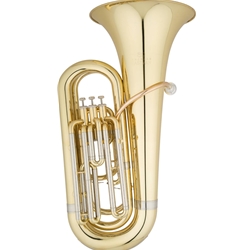
The TUBA is the largest instrument of the band and has the lowest voice. It is the
foundation to the sound of the group. Tubas are made of brass, and played from a sitting
position with the instrument resting in the players lap or on a stand on the floor. The tuba
is a school-owned instrument.
WHAT IT TAKES TO PLAY THE TUBA:
- MOUTH: Must be able to form and hold in the correct position (embouchure)
while blowing. Must be able to make a relaxed buzzing sound in the
mouthpiece. This instrument is an especially good choice for students with braces. - HANDS AND FINGERS: Fingers of the right hand are used to play the
instrument. - PERSONALITY: A good sense of rhythm is a must since tubists play an
important role in the time-keeping responsibilities for the band. Responsible,
good-natured children do best on tuba.
THE PERCUSSION INSTRUMENTS OF THE BAND
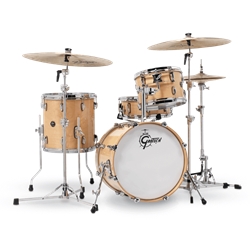
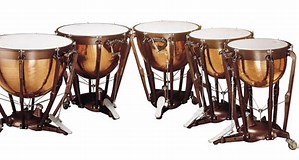
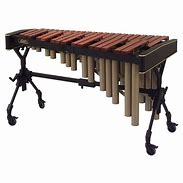
Instruments in the PERCUSSION section include the snare drum, bass drum, timpani,
bells, and other mallet instruments, and various smaller instruments including the triangle
and tambourine. Students begin their study by playing on a practice pad and keyboard
instruments.
WHAT IT TAKES TO PLAY PERCUSSION INSTRUMENTS:
- HANDS AND FINGERS: Wrists and fingers must allow the stick to bounce
naturally off the drum head. - OTHER SKILLS: Percussion students should be gifted with a natural sense of
rhythm. A previous experience playing piano helps students understand the
mallet instruments. - SPECIAL PERCUSSION NOTES: Percussion is a popular first choice among
beginners. This leads to a very high level of competition--students who are not
comfortable with intense competition may need to choose another instrument. Just
because your child beats on things around the house does not mean he or she will be a
good “drummer.” A keen sense of rhythm and excellent hand-eye coordination are much
more important. A/B students with good organizational skills tend to do well in
percussion class.

